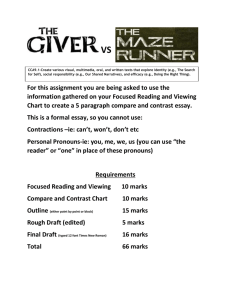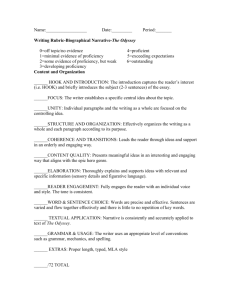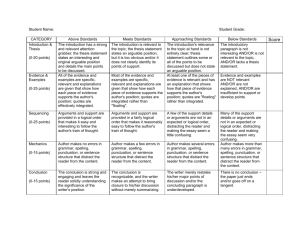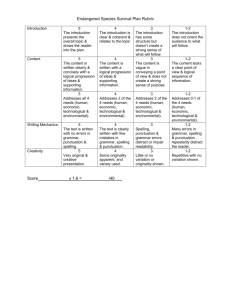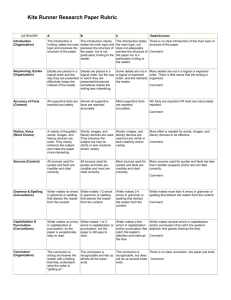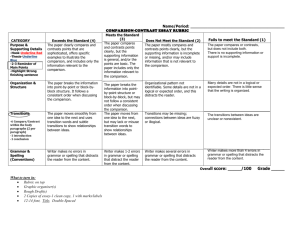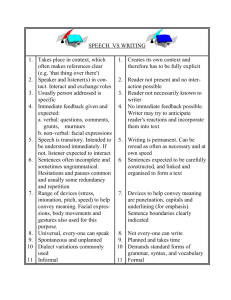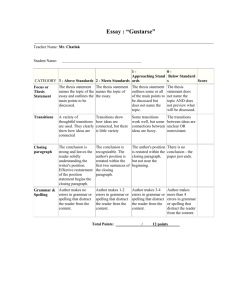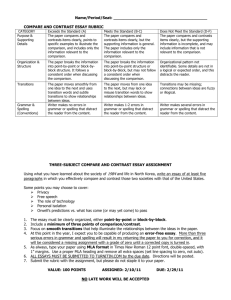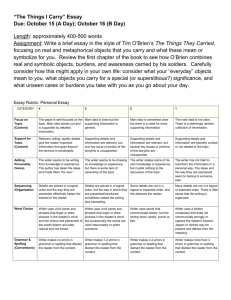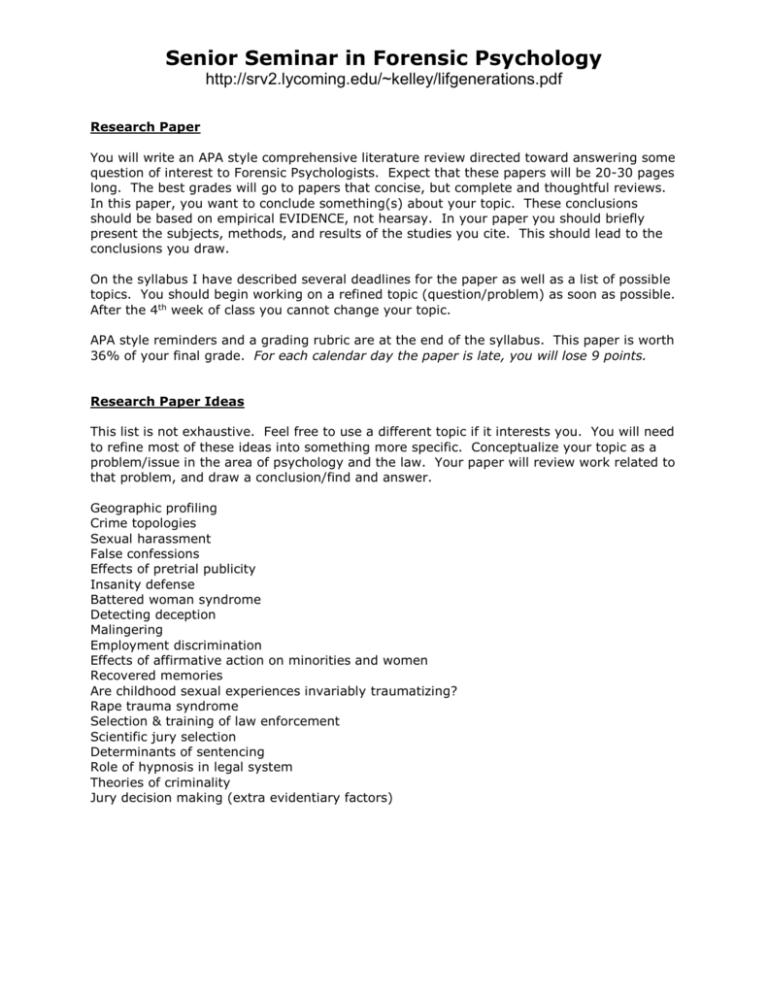
Senior Seminar in Forensic Psychology
http://srv2.lycoming.edu/~kelley/lifgenerations.pdf
Research Paper
You will write an APA style comprehensive literature review directed toward answering some
question of interest to Forensic Psychologists. Expect that these papers will be 20-30 pages
long. The best grades will go to papers that concise, but complete and thoughtful reviews.
In this paper, you want to conclude something(s) about your topic. These conclusions
should be based on empirical EVIDENCE, not hearsay. In your paper you should briefly
present the subjects, methods, and results of the studies you cite. This should lead to the
conclusions you draw.
On the syllabus I have described several deadlines for the paper as well as a list of possible
topics. You should begin working on a refined topic (question/problem) as soon as possible.
After the 4th week of class you cannot change your topic.
APA style reminders and a grading rubric are at the end of the syllabus. This paper is worth
36% of your final grade. For each calendar day the paper is late, you will lose 9 points.
Research Paper Ideas
This list is not exhaustive. Feel free to use a different topic if it interests you. You will need
to refine most of these ideas into something more specific. Conceptualize your topic as a
problem/issue in the area of psychology and the law. Your paper will review work related to
that problem, and draw a conclusion/find and answer.
Geographic profiling
Crime topologies
Sexual harassment
False confessions
Effects of pretrial publicity
Insanity defense
Battered woman syndrome
Detecting deception
Malingering
Employment discrimination
Effects of affirmative action on minorities and women
Recovered memories
Are childhood sexual experiences invariably traumatizing?
Rape trauma syndrome
Selection & training of law enforcement
Scientific jury selection
Determinants of sentencing
Role of hypnosis in legal system
Theories of criminality
Jury decision making (extra evidentiary factors)
Research Paper Scoring Rubric
Student name: ________________________
Draft/Version: ______________
Grader’s name: ________________________
Topic: _____________________
CATEGORY
4
3
2
1
Organization
The hypothesis is
The hypothesis is
There is no clear
Introduction The introduction is
Sequencing
inviting, clearly
states a focused
hypothesis and
previews the
structure of the
paper
Details are placed
in logical order and
the way they are
presented
effectively keeps
the interest of the
reader.
vaguely stated of
unfocused, but the
introduction is
inviting and previews
the structure of the
paper
Details are placed in
a logical order, but
the way in which
they are
presented/introduced
sometimes makes
the writing less
interesting.
The conclusion is
recognizable and ties
up almost all the
loose ends.
vaguely stated of
unfocused, and
there is little
indication about
the structure of
the paper.
Some details are
not in a logical or
expected order,
and this distracts
the reader.
introduction of the
hypothesis or
structure of the
paper.
The conclusion is
recognizable, but
does not tie up
several loose
ends.
There is no clear
conclusion, the
paper just ends.
NO facts are
reported OR most
are inaccurately
reported.
Many sources
used for quotes
and facts are less
the credible
(suspect) and/or
are not cited
correctly.
The main idea is
not clear. There
is a seemingly
random collection
of information.
Many details are
not in a logical or
expected order.
There is little
sense that the
writing is
organized.
Conclusion
The conclusion is
strong and leaves
the reader with a
feeling that they
understand what
the writer is
“getting at”.
Accuracy of
facts
All supportive facts
are reported
accurately.
Almost all supportive
facts are reported
accurately.
Most supportive
facts are reported
accurately.
Credibility
of sources
All sources used for
quotes and facts
are credible, come
largely from
professional
journals and are
cited correctly.
There is one clear,
well focused topic.
Main idea stands
out and is
supported by
detailed
information.
Relevant, telling,
quality details give
the reader
important
information that
goes beyond the
obvious or
predictable.
Most sources used
for quotes and facts
are credible, come
largely from
professional journals
and most are cited
correctly.
Main idea is clear,
but the supporting
information is
general.
Most sources used
for quotes and
facts are not from
professional
journals, but are
cited correctly.
Supporting details
and information are
relevant, but only
marginal evidence of
critical thinking.
Supporting details
and information
are relevant, but
several key issues
or portions of the
storyline are
unsupported.
Supporting details
and information
are typically
unclear or not
related to the
topic.
Grammar &
Spelling
Writer makes NO
errors in grammar
or spelling that
distract the reader
from the content.
Writer makes 3-4
errors in grammar or
spelling that distract
the reader from the
content.
Writer makes 510 errors in
grammar or
spelling that
distract the reader
from the content.
APA
formatting
Title page, headers,
margins are all
correct.
Some use of APA
formatting, but
references not
properly formatted.
Poor formatting.
Writer makes
more than 10
errors in grammar
or spelling that
distract the
reader from the
content.
No use of APA
format.
Content
Focus on
topic
Support for
topic
Main idea is
somewhat clear,
but there is a
need for more
supporting
information.
Format
TOTAL SCORE (out of 36)
Score

